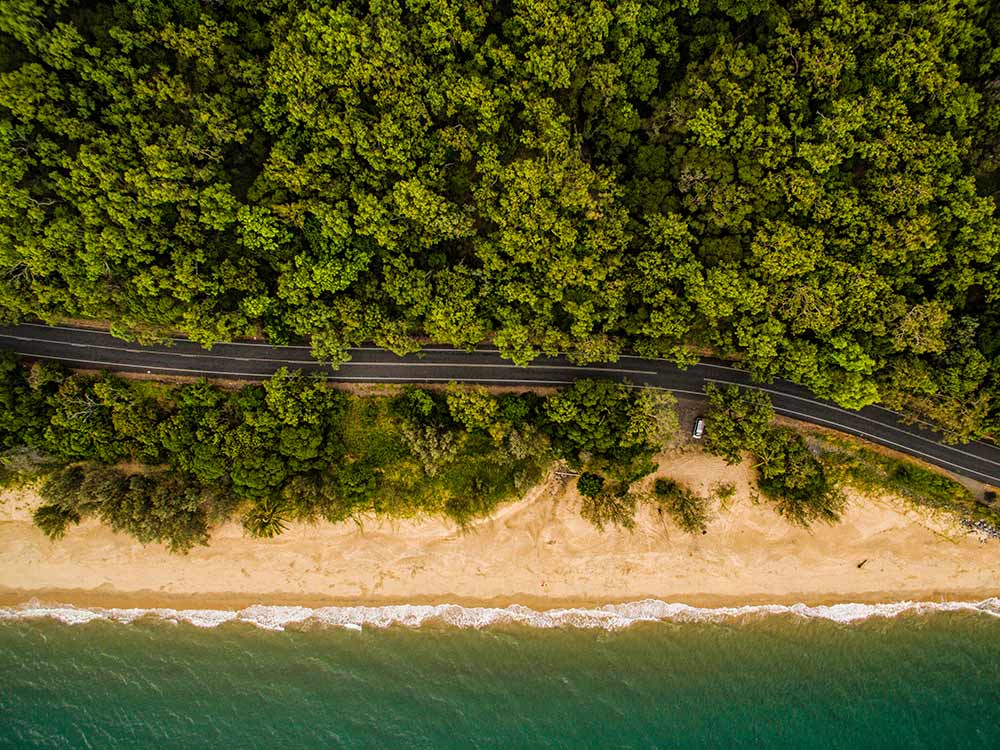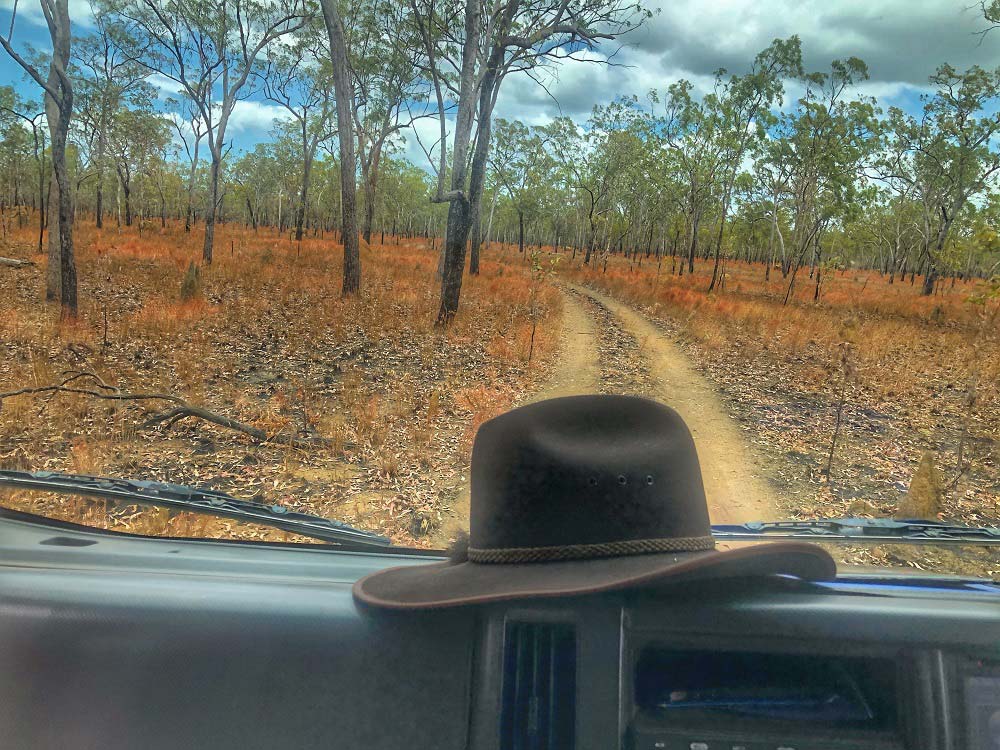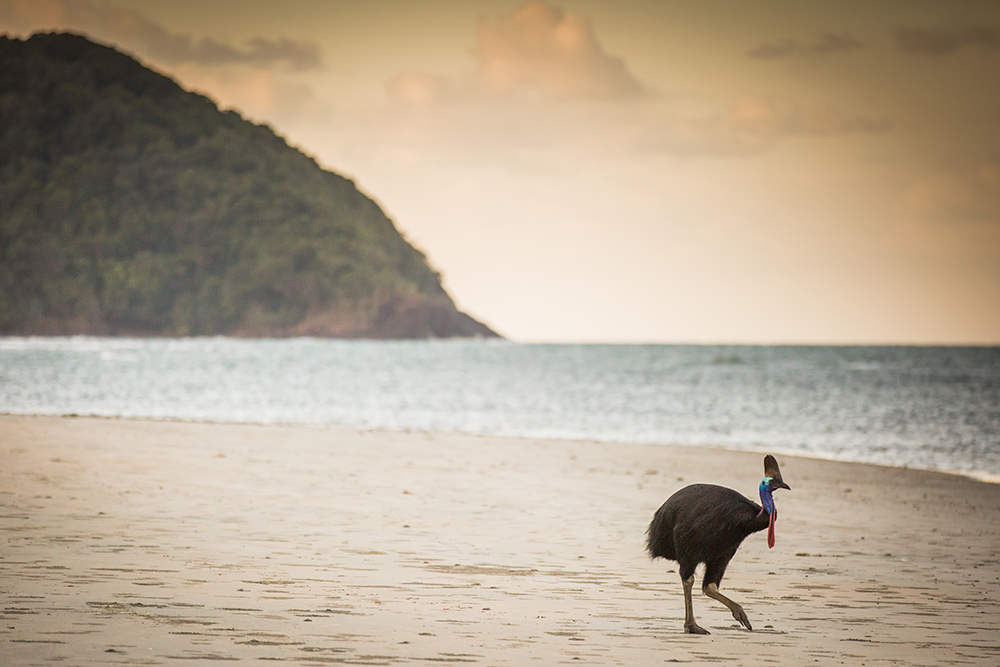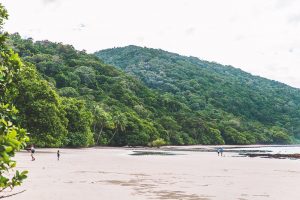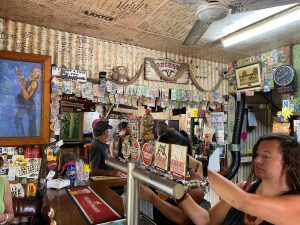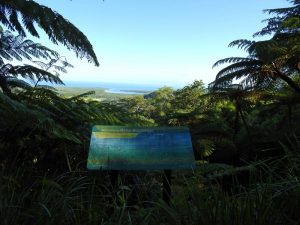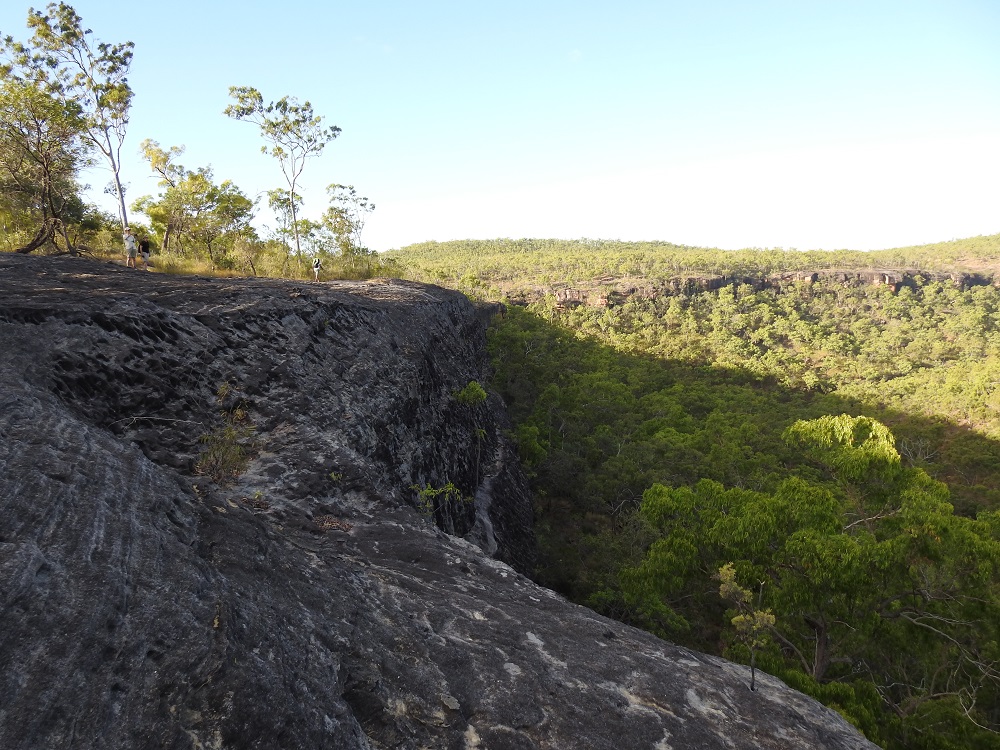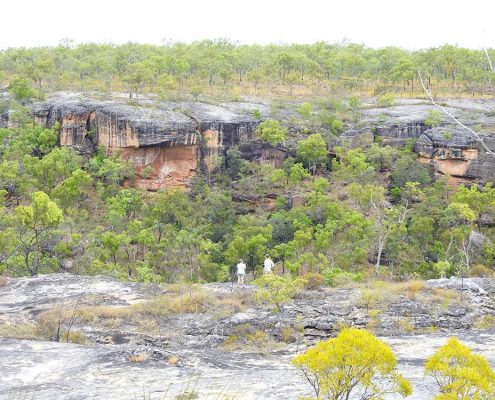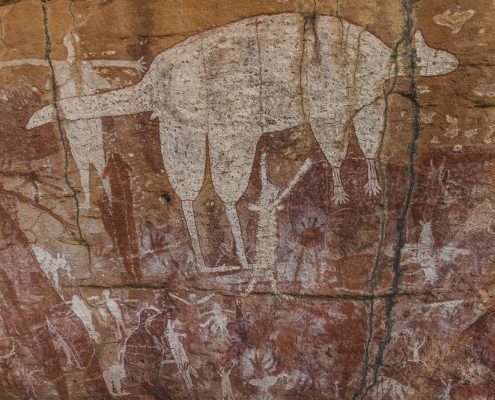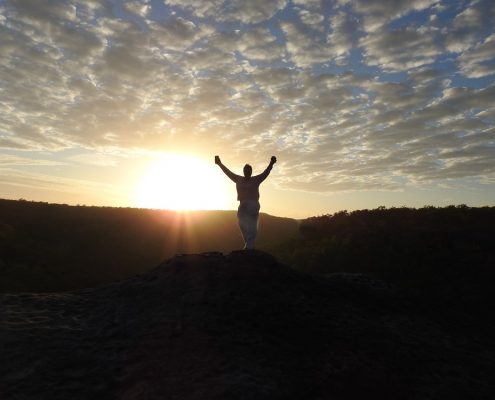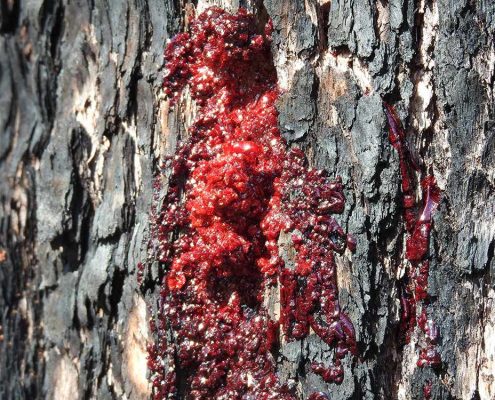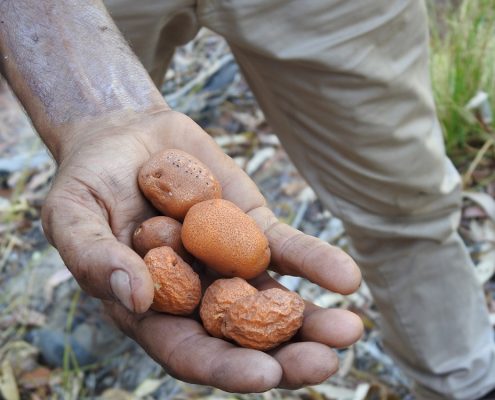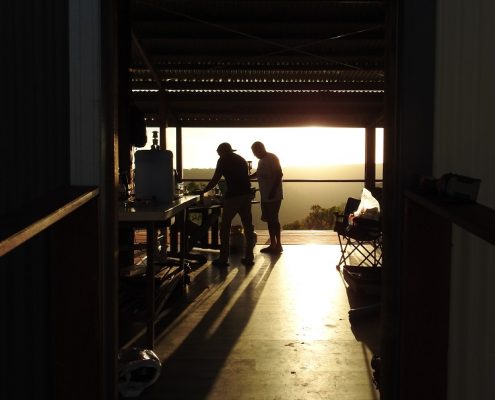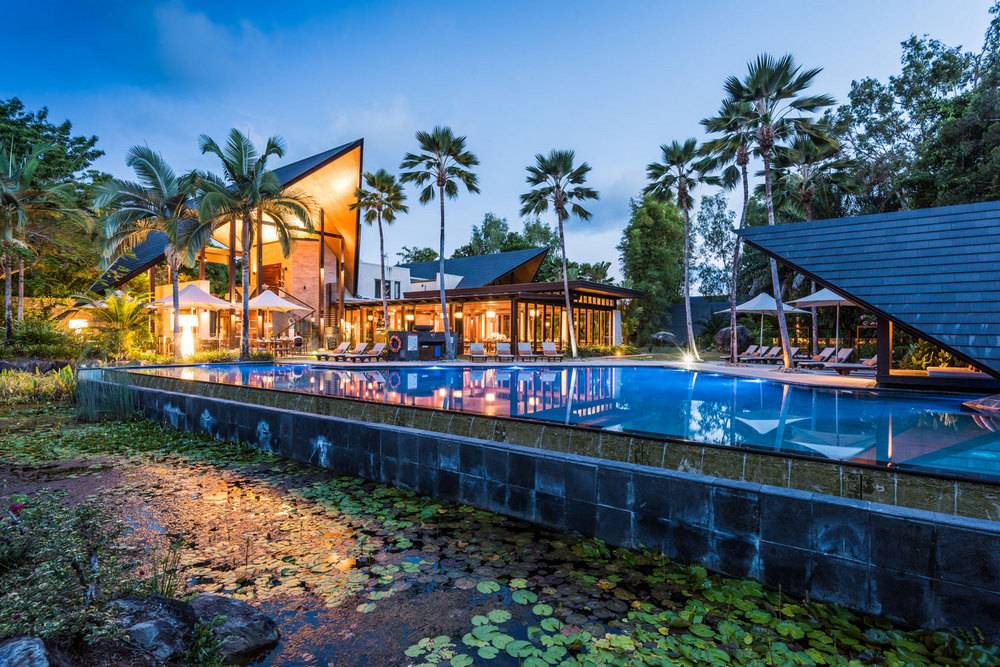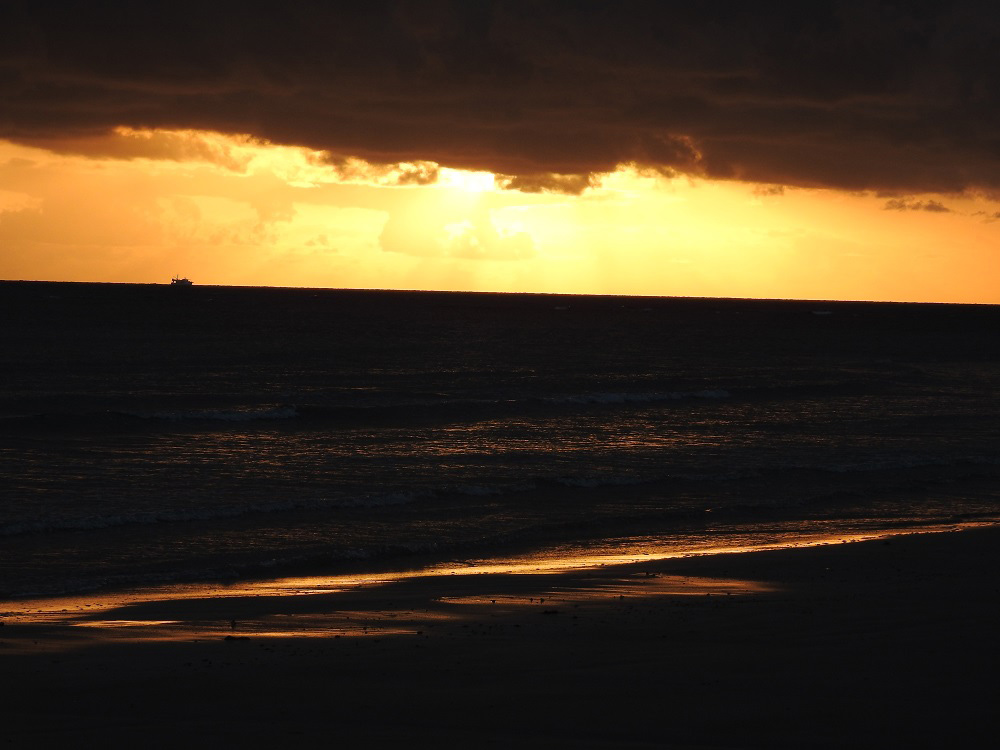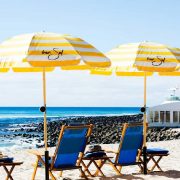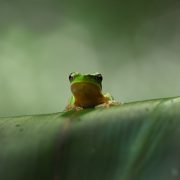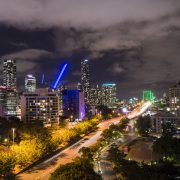Wild adventure – from Cairns to Cape York
From the booming hub of Cairns to the delights of the Great Barrier Reef, the rainforest and the rugged beauty of Cape York, Queensland’s top end delivers a five-star experience.
We are about as far as you can get from the aquamarine and turquoise water of the Great Barrier Reef, but really, we are not far at all. We are bumping, or make that lurching, along a dirt track that even has a name – the Maytown Coach Road – crossing rivers, passing red swathes of kangaroo grass and sentinel-like termite mounds. We are laughing at this alien territory that is the playground of rough, tough, four-wheel drive vehicles. It is like another planet to us city slickers, and when we reach our destination, we are almost rendered speechless.
Rewind a few days and I’d been in Cairns, a booming regional city that has a burgeoning food scene, some excellent attractions and your ticket to a buffet of activities that could keep you busy for a month or two. It is known as the gateway to the Tropics, as from here you can duck up to The Daintree, zip up to Kuranda with its Skyrail and train, or buzz out to the reef by air or sea, snorkelling or diving with the alphabet of tropical fish. Want to make the most of it by staying on an island? You can do that too, at Fitzroy, Green, Bedarra or stunning Lizard Island. But I stayed in Cairns, and loved strolling along the Esplanade down to the waterfront where I could have swum in the massive lagoon pool. I visit the Cairns Aquarium and learn a lot about what’s out on there on the Reef and even see a shark egg with a baby shark in it. Back in my room at Riley, I look out over Trinity Inlet and see the boats coming and going, and it makes me think of Captain James Cook who put this part of the world on the map 250 years ago.
Have a Captain Cook at this
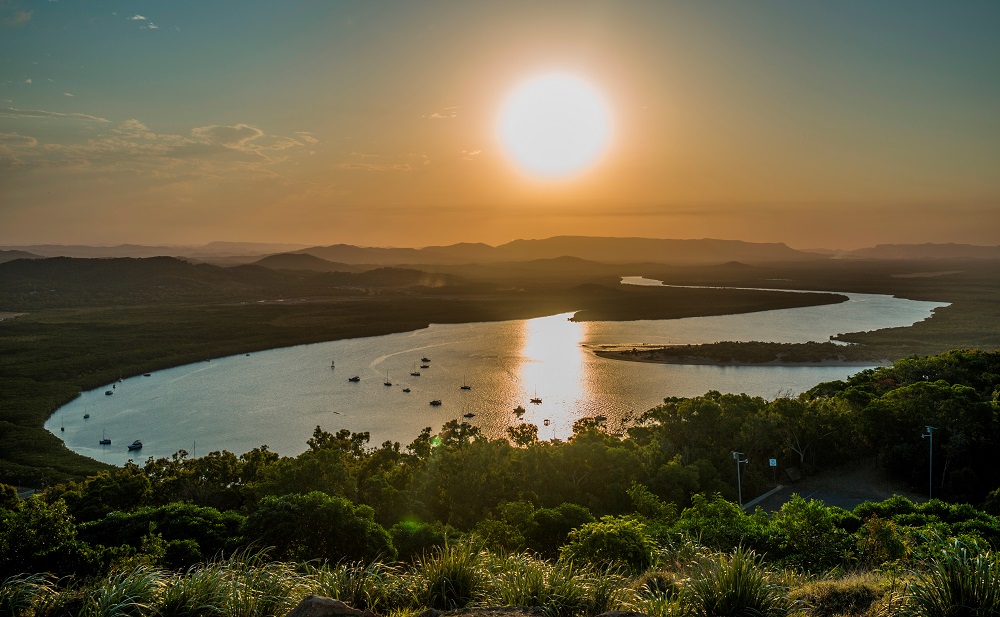
Sunset over the Endeavour River from Grassy Hill, in Cooktown. Image courtesy Tourism Cairns & Great Barrier Reef
On 17 June 1770, Captain James Cook sailed into Waalumbaal Birri – what is now known as the Endeavour River, into the Waymburr, one of 32 clan lands of the Guugu Yimithirr tribal nations. It was his lucky day, as this part of the land was a neutral zone. Clans would meet here for cultural ceremonies and also for mediations and the strict law was the no blood could be deliberately spilled here. If he had chosen to land on the other side of the river, the history of the Pacific might have been very different.
Cook had come to grief seven days earlier, running into a coral reef about 24 kilometres off a point of land he named Cape Tribulation. The vessel was stuck on the coral, and only after throwing as much superfluous stuff off the ship as they could to lighten the ship, did it become free. The lovely new holes formed from the coral, created more drama, and it was by sheer skill and will that the Endeavour limped 65 kilometres north, before spying the mouth of the Waalumbaal Birri, which they entered and ran aground on the sandy shore for repairs.
He would remain there until 4 August, 1770, along with his 87 men. There were interactions between Cook and his men and the locals, but they were peaceful, with words documented, along with the names of animals like the kangaroo. Things did get a little tense when one of Cook’s crew took a number of sea turtles, which were not in season and this riled up the clan and a shot was fired. It took the courage of a man now known as ‘Little Old Man’, chosen by the 32 clans present, to walk forward and present to Cook a broken-tipped spear, and carry out a ritual, which luckily, Cook took for what it was. Tragedy was averted, and this went down in history as the first recorded act of reconciliation between Indigenous and Non-indigenous Australians, with 48 days of mutual respect and significant scientific discoveries.
Cook is everywhere around the town that bears his name. We look over the mouth of the Endeavour River from the Grassy Hill Lookout, imagining Cook bringing his damaged boat in 250 years ago. We stroll along the main street, passing the statue of Cook, the James Cook Monument, the jetty where you can feed the grouper, hire a dinghy or go for a river cruise, see where he landed the ship, and also learn about the gold mining days in town. The James Cook Museum is well worth a visit, with a highlight being the anchor and cannon of the Endeavour.
Cook had a great respect for Little Old Man and the clans, writing in his journal:
“They may appear to some to be the most wretched people upon Earth, but in reality they are far happier than we Europeans. They live in a Tranquillity which is not disturb’d by the Inequality of Condition. The Earth and Sea furnishes them with all things necessary for life. They seem’d to set no Value upon any thing we gave them. This in my opinion argues that they think themselves provided with all the necessarys of Life.”
From Cairns to the Cape
The road to Cooktown from Cairns is best taken slowly. We stop off for some croc spotting with Daintree River Cruises, relaxing with a tranquil meander along the Daintree River. We admire the twisting forest with its vital mangroves providing a lifeline for the river and its banks, spy a snake swimming across our bow and crocs sunning themselves on the sand. We continue up the Great Barrier Reef Highway to Port Douglas, browsing colourful art and craft and clothing at the market before tucking into a sensational lunch at Salsa Bar & Grill – a local favourite and with good reason.
Fuelled up, it is back in the 4WD to pass through Mossman, where we could have looked for platypus in the Gorge, until we reach the Daintree River Ferry. It feels like the adventure is just getting started – and it is. The Daintree is the oldest rainforest in the world, aged approximately 180 million years old. To put that into perspective, it’s tens of millions of years older than The Amazon. It is not big, covering just 1200 square kilometres, but it is extremely significant, with ancient plants that are still living, as well as thousands of species of birds, animals and reptiles. Part of the Wet Tropics area, it is now World Heritage-listed.
Driving past ancient ferns, tangles of vegetation and crossing creeks, it is easy to feel like a pioneer, and you also get the feeling that us humans are definitely not in charge here.
We stop for the night at Cape Tribulation, the only place in the world where two World Heritage-listed national parks meet. The Great Barrier Reef laps onto the shores of the sand, which is flanked by the Daintree Rainforest. We are staying at the Cape Trib Beach House, which is perfectly located metres from the beach. The cabins are rustic, but the location is spectacular. We stroll on the beach at sunset and sunrise, and love being ensconced in the rainforest, listening to insects and birds and keeping an eye out for the cassowary that are often found here. These large birds are striking, with glossy black plumage, a purple and blue neck and there is an unusual ‘casque’ or helmet, on its head. Someone once described it as ‘an emu dressed in drag’, and that is fitting. We hear about sightings from the other guests at dinner in Tides Restaurant, but no luck for us. Should we have been able to stay longer here, we could have gone on various tours, from horse riding on the beach to a snorkel safari on the Great Barrier Reef, to jungle walks in the day – or night – to get a real sense of the incredible amount of life exists in this Jurassic-park lie environment.
From here we head up the famous and feisty Bloomfield Track, feeling like intrepid travellers way, way off the beaten path. We stop at the Lions Head Hotel, and could happily have stayed for hours. This place is like a living museum, with artefacts on the walls and even hanging from the ceiling. It opened in 1875, and people have been recording their names on the walls almost ever since. The owner tells us that last week there was a taipan in the bar, but not to worry, because the black-headed pythons like snacking on taipans. It has a real character, and the burgers are delicious.
Into the Magnificent
Johnny Murison picks us up in Cooktown for the two-day Jarramali Rock Art Tours. Johnny is a Kuku-yalani man who is determined to educate visitors about the Indigenous history of his people. After the extreme four-wheel driving inland from Laura, he suggests we walk the last little bit. We do, and our jaws drop when we arrive at the campsite, perched a safe distance from a spectacular escarpment. The view over opposite cliff faces is dramatic, and at the bottom, what looks like impenetrable forest canopy of the most amazing shades of green. But what we have come to see is almost under our feet.
We drop our gear in the tents, and Johnny takes us on a walk, stopping to give us examples of local plants that can be used for bush tucker, and bush medicine. We follow him down a steep track, before arriving at his family’s art gallery, his ancestors recording their history over 20,000 years. Named the Magnificent Gallery, Johnny points out many paintings, giving some history on what they mean or what they are of. There are 450 individual paintings here, and our group are mesmerised and fascinated by what we are seeing. He points out charcoal in the sandy soil beneath our feet, and tells us that it is from the fires his ancestors would have made when staying in this site, protected from weather. I get tingles imagining them here, laughing, talking, and cooking around the fire while the artists among them drew on the stone canvas.
Back at camp we choose to sleep under the stars, moving the camp beds outside the tent, before we all gather for sunset drinks in the open-sided outback kitchen while Johnny prepares dinner on the campfire outside. Afterwards, he mesmerises with his didgeridoo, before guests disappear into the night to sleep under a sky full of stars.
Waking the next morning, a bit of twig in my hair, I go make a cup of tea, then take it to a bench seat on the rim of the escarpment to watch the sunrise. I think as I sip, that even though I love staying in a luxury resort with all the trimmings, sleeping outside, in this place, feeling strangely protected by Johnny’s ancestors, would be my preference, each and every time. Magnificent, indeed.
Where to stay
Cairns
Riley, A Crystalbrook Collection Resort, is a surprising property as it wins you over on every level. It has a conscience, with recycled timber keys, cardboard coat hangers and you won’t find plastic water bottles anywhere. The pool is excellent, the rooftop bar has a great vibe, the dining options are really good, the rooms gorgeous – I could see over Trinity Inlet from my bed and from the shower – and there is a spa. What more does one need?
Lizard Island
For a reef stay in five-star comfort, Lizard Island has it all. All the accommodation options are exquisite, with The Pavilion and The Villa standouts. Go snorkelling, diving, kayaking or just lazing in the water, visit the Research Centre or go hiking. Or, wake up with morning yoga and then be pampered with a treatment from the spa. 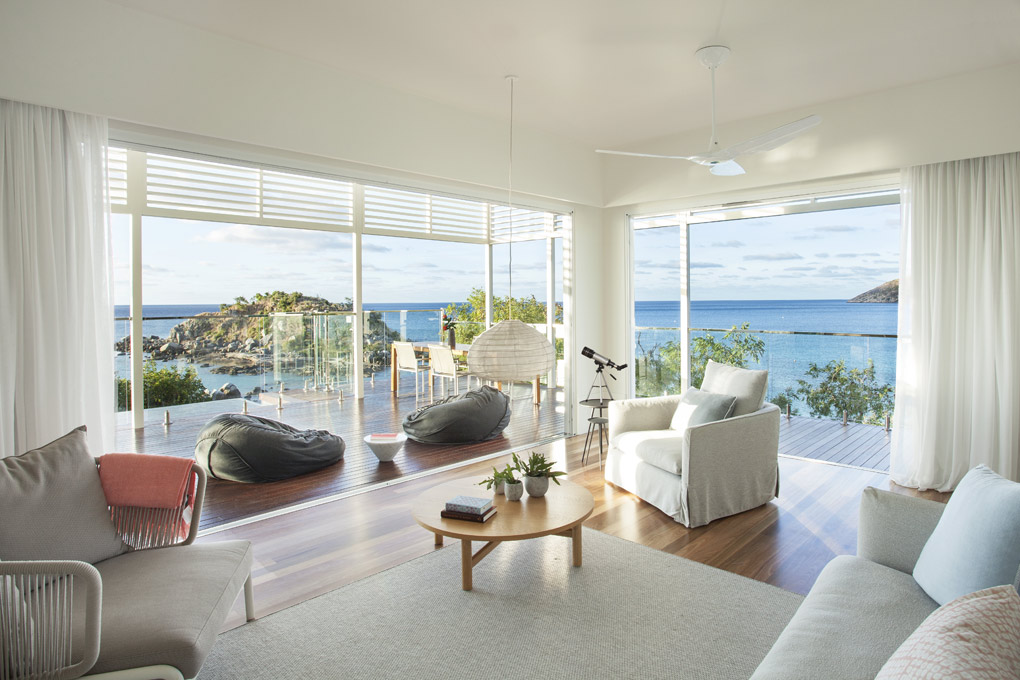
Lizard Island The Pavilion
Port Douglas
Niramaya Villas & Spa is the sort of place you don’t want to leave. The gorgeous villas are set in manicured gardens and the architecture of the resort buildings is quite striking, with high ceilings and pitched roofs. Villas feature bedroom pavilions, a heated plunge pool, outdoor lounge pavilion and private courtyard gardens with outdoor shower. There is a full kitchen, or dine in the resort’s exceptional restaurant.
Palm Cove
Pullman Palm Cove Sea Temple & Spa sits on the beachfront on the southern end of the beach in beautiful Palm Cove. There is a great selection of room types, with the ultimate being the Penthouse Apartments. Dine in at the tropical terrace restaurant Temple of Tastes, after some cocktails at the pool side lagoon bar, or for some holiday decadence, order room service.
Cooktown
Sovereign Resort is an excellent property in the centre of Cooktown. The accommodation is excellent, the resort pool quite beautiful and the restaurant first class. The meal here is as good as I have had anywhere. Check out the cabinets dotted around to see some historic items from the original hotel back in the day, including some Rouen crockery from the 1800s.
Daintree
Cape Trib Beach House is at one with its surroundings and has a number of different accommodation types. There is no TV and there’s no phone reception, so take the opportunity to tune in the forest around you.
** This story first appeared in Ocean Magazine, published in 2020.

